how much can a timber bridge support?
Understanding the load capacities & uses of timber bridges
designed & built for your requirements
Timber Bridge Load Capacities are one of the most important factors when it comes to building any type of bridge. However, we are here to dispel the myths that timber bridges aren't as strong as alternative building materials. Here are the crucial considerations when it comes to planning your next crossing.
I didn't know a Timber bridge could do that!
Most people don’t know about road ratings or loading capacities - we get that. Lots of people underestimate timber bridges - we know that. So to save you a challenging web search, time, and maybe even some money, we made this webinar for you! This session will outline both vehicular and pedestrian use that timber bridges are great for AND give you access to guideline resources on how you can determine what capacity might be necessary for your next project. From accommodating highway standards to some supersized requests for powerline companies, mining facilities, and construction equipment, we’ve got projects that’ll make you say, “I didn’t know a timber bridge could do THAT.”
Standard Vehicular Loading Diagrams
This category is based on regular usage of the bridge by vehicles up to a semi-tractor-trailer. The most common loading capacity for Standard Vehicular Use is the HS20 Truck Loading. They are typically utilized for private and public roadways. Ultimately, a loading capacity is determined by the largest vehicle for anticipated regular use, for example, an HS20 supports a typical semi-tractor-trailer weighing 72,000 lbs. To see more about HS Truck Loadings for maximum weights and weight distribution see the associated loading diagrams and charts.
LOAD CAPACITY
axle quantity
axle spread
Gross vehicular weight (GVW)
per axle loading
hs20
3 axles
Min 14' axle spread, 14' to 30' variable axle spread
72k lbs /36 Tons
8k lbs - 32k lbs
hL93
3 axles
Min 14' axle spread, 14' to 30' variable axle spread
72k lbs /36 Tons + 640 lbs per linear foot of uniform loading
8k lbs - 32k lbs - 32lbs + 640 lbs per linear foot of uniform loading
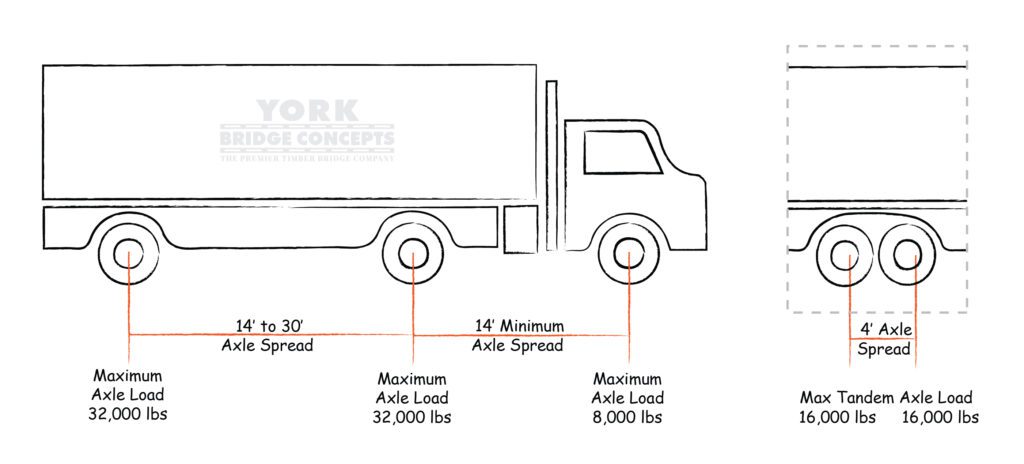
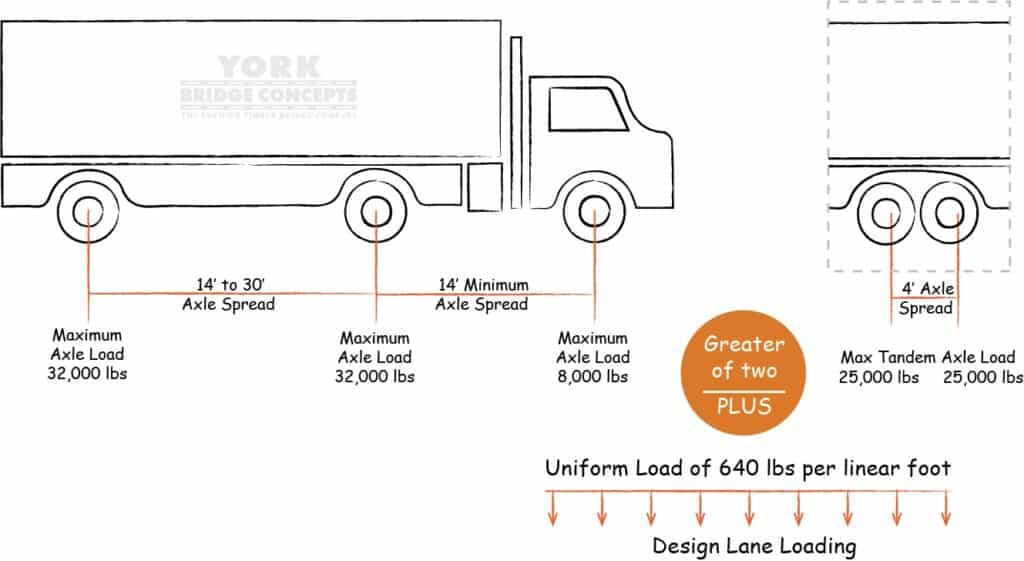
custom Loading Timber Built Vehicular Bridges
- Load capacities for vehicular bridges are determined based on the types of vehicles they are designed to support. This includes considerations for standard passenger vehicles, trucks, buses, and other specialized vehicles.
- The load capacity is typically specified in terms of the maximum allowable weight that the bridge can safely support. This includes both static and dynamic loads.
- Factors such as traffic volume, vehicle types, and the intended use of the bridge play a significant role in determining the appropriate load capacity.
Light Vehicular & Pedestrian Loading Diagrams
LOAD CAPACITY
axle quantity
axle spread
per axle loading
5 Ton GVW
2 axles
Min 7' Axle Spread
5 kips (5k lbs) - 5 kips (5k lbs)
2 Ton GVW
2 axles
Min 7' Axle Spread
2 kips (2k lbs) - 2 kips (2k lbs)
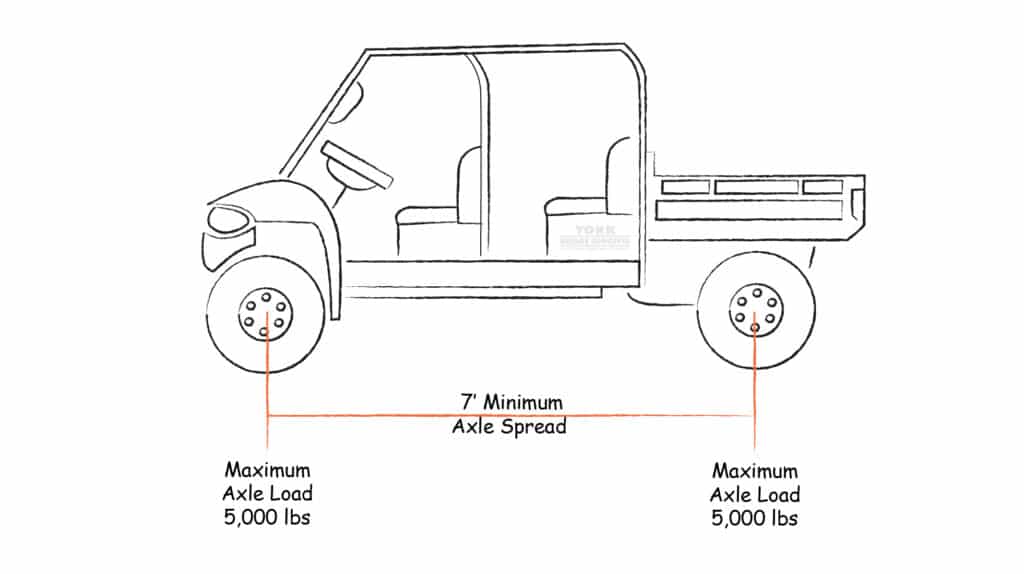
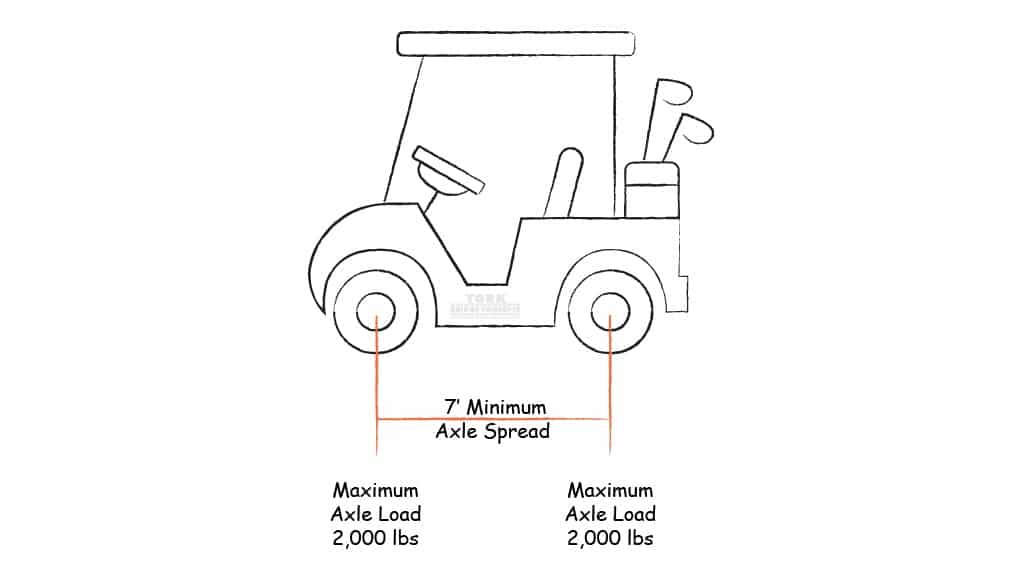
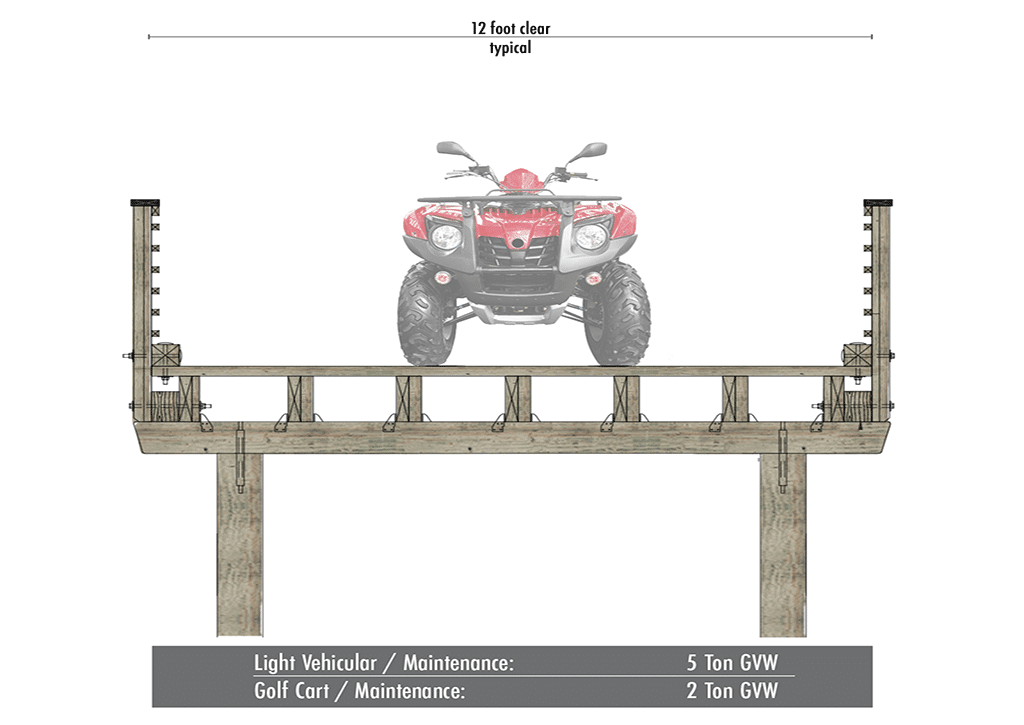
Timber Bridge Load Capacity Factors
- Load capacities for vehicular bridges are determined based on the types of vehicles they are designed to support. This includes considerations for standard passenger vehicles, trucks, buses, and other specialized vehicles.
- The load capacity is typically specified in terms of the maximum allowable weight that the bridge can safely support. This includes both static and dynamic loads.
- Factors such as traffic volume, vehicle types, and the intended use of the bridge play a significant role in determining the appropriate load capacity.
Pedestrian & Boardwalk Loading Diagrams
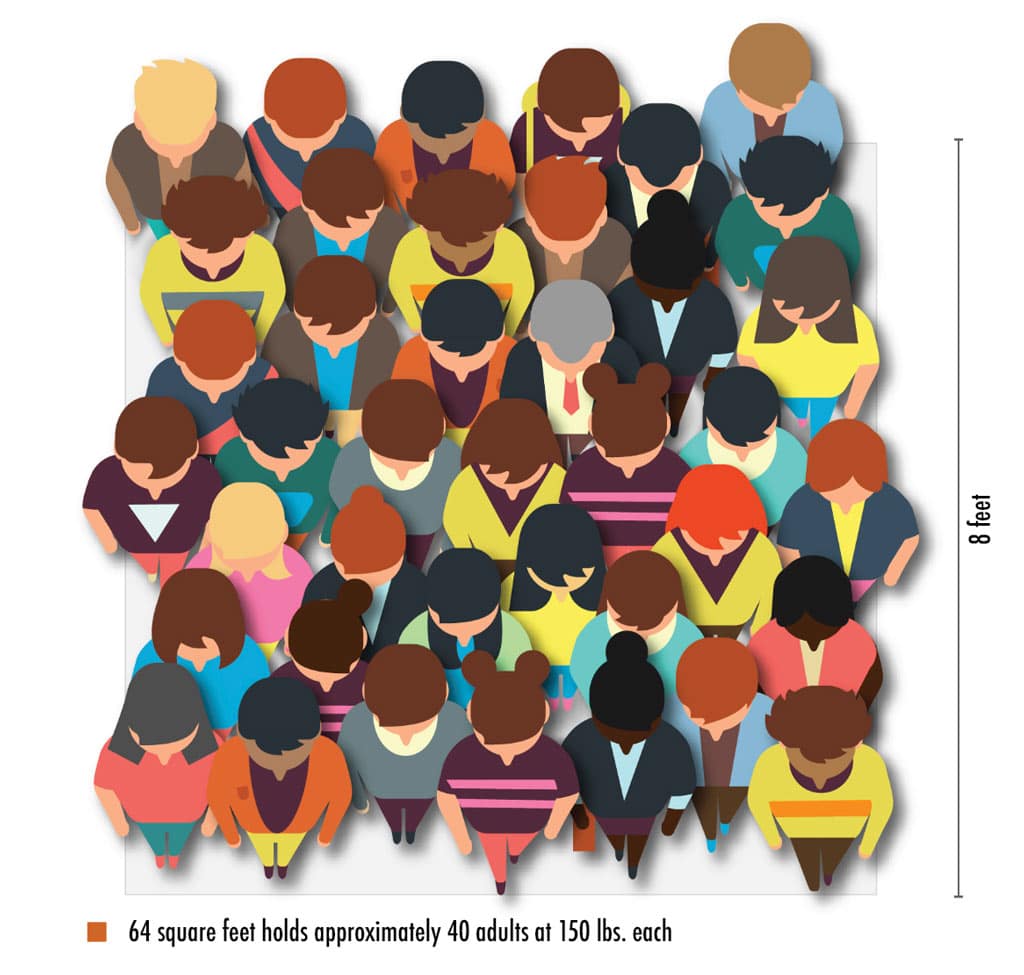
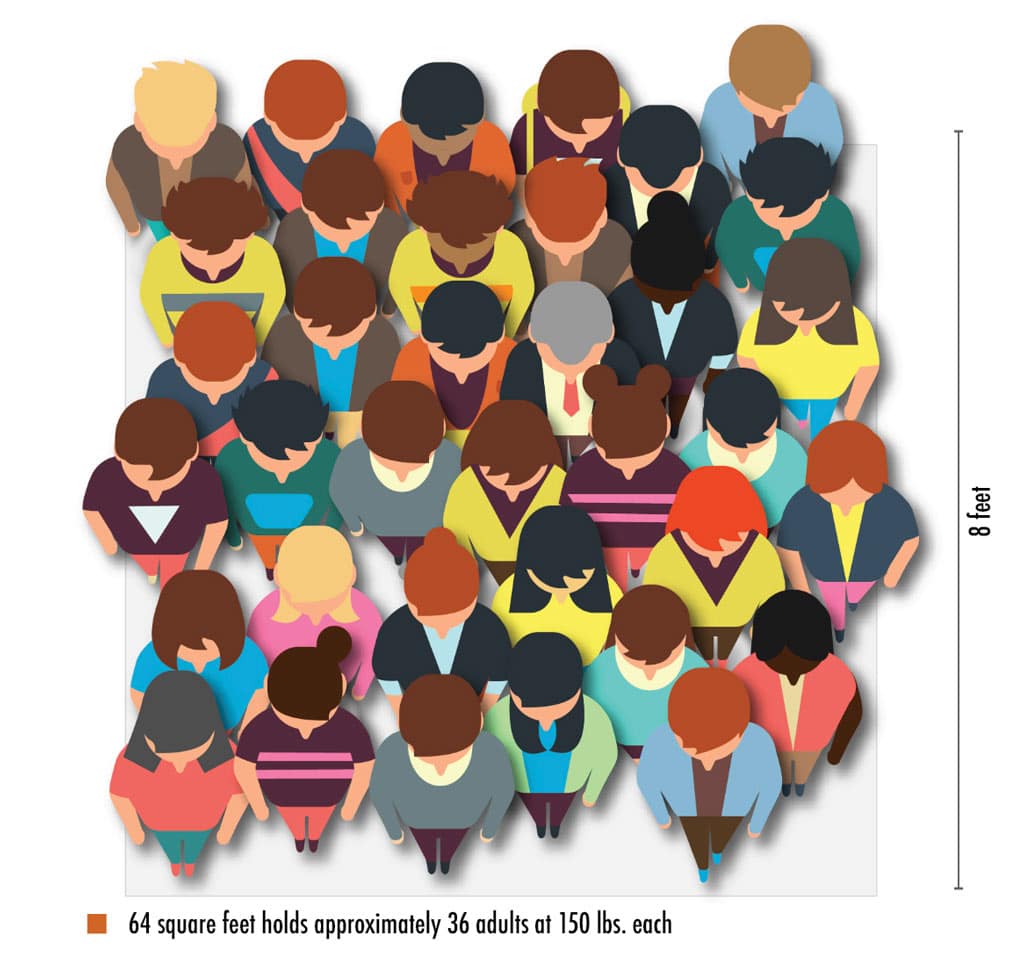
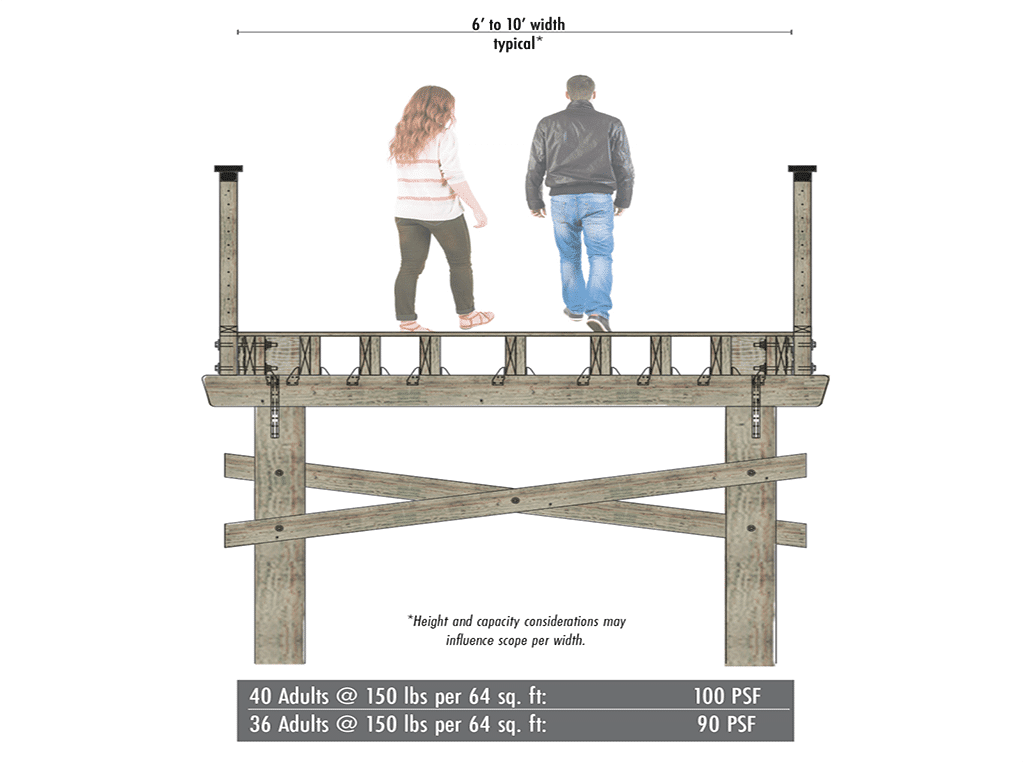
Safety & Regulation Factors For Timber Bridge Load Capacity
- In both vehicular and timber bridges, safety factors are incorporated into the design to ensure that the bridge can handle loads well beyond the expected maximum. This provides an additional margin of safety to account for uncertainties and variations in actual usage.
- Load capacities are subject to engineering standards, regulations, and building codes. Engineers must adhere to these guidelines to ensure that bridges meet safety and performance criteria.
Section Views
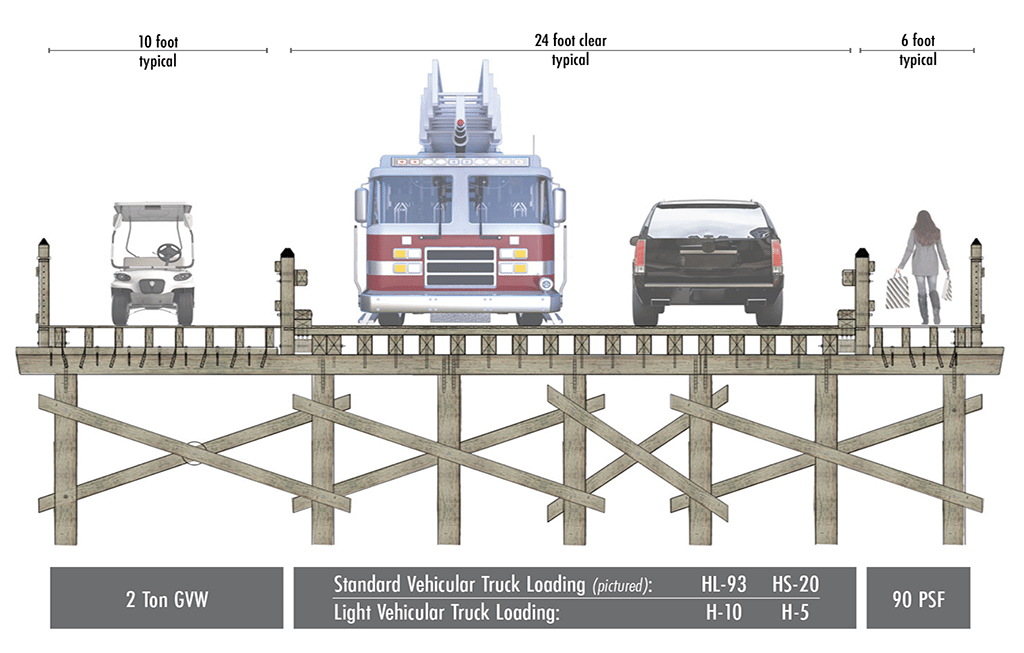
Double Lane + Two attached pedestrians
Visual loading diagram for a Double Lane Vehicular with two attached pedestrian sections
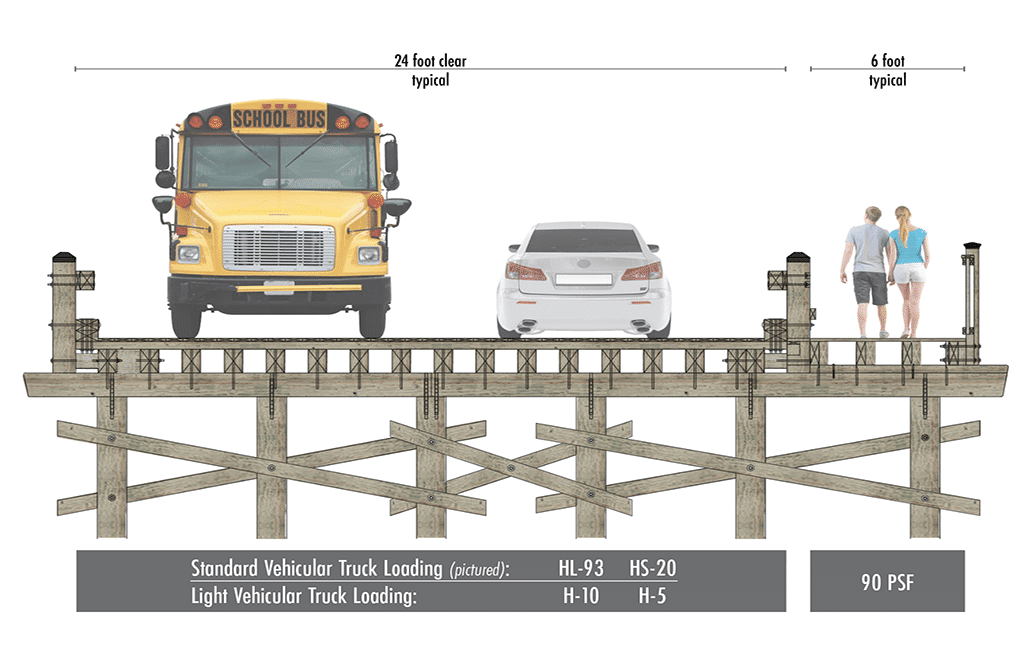
Double Lane + Walkway
Visual loading diagram for a Double Lane Vehicular with a single attached pedestrian section
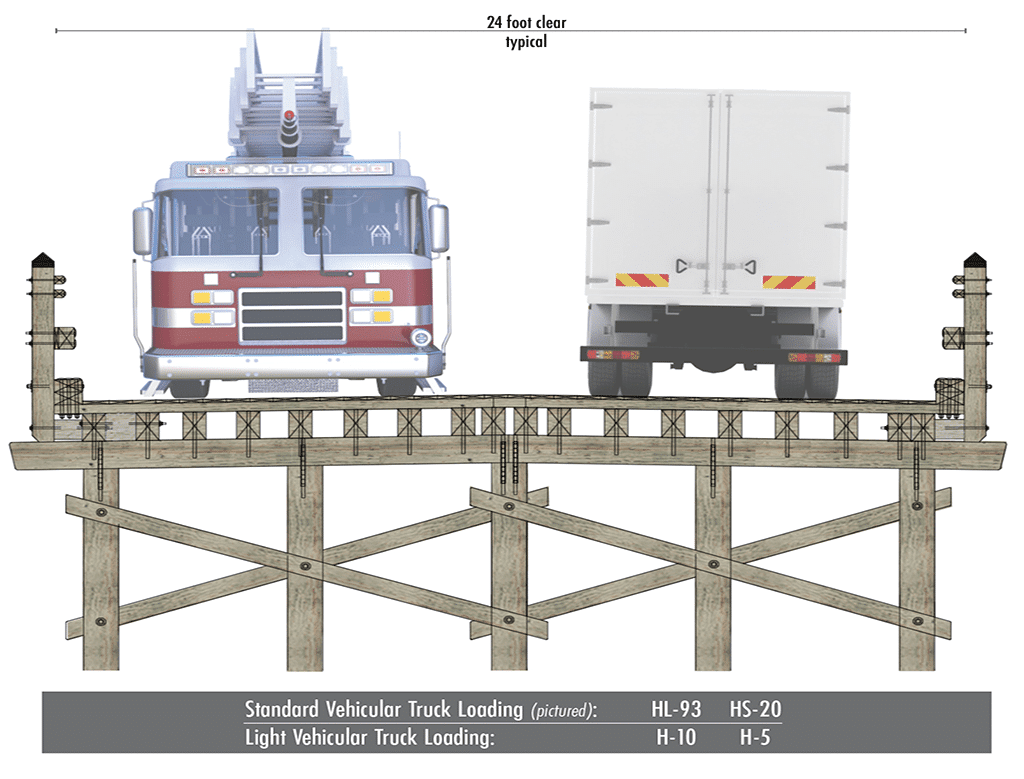
Double Lane Vehicular
Visual loading diagram for Double Lane Vehicular timber bridge
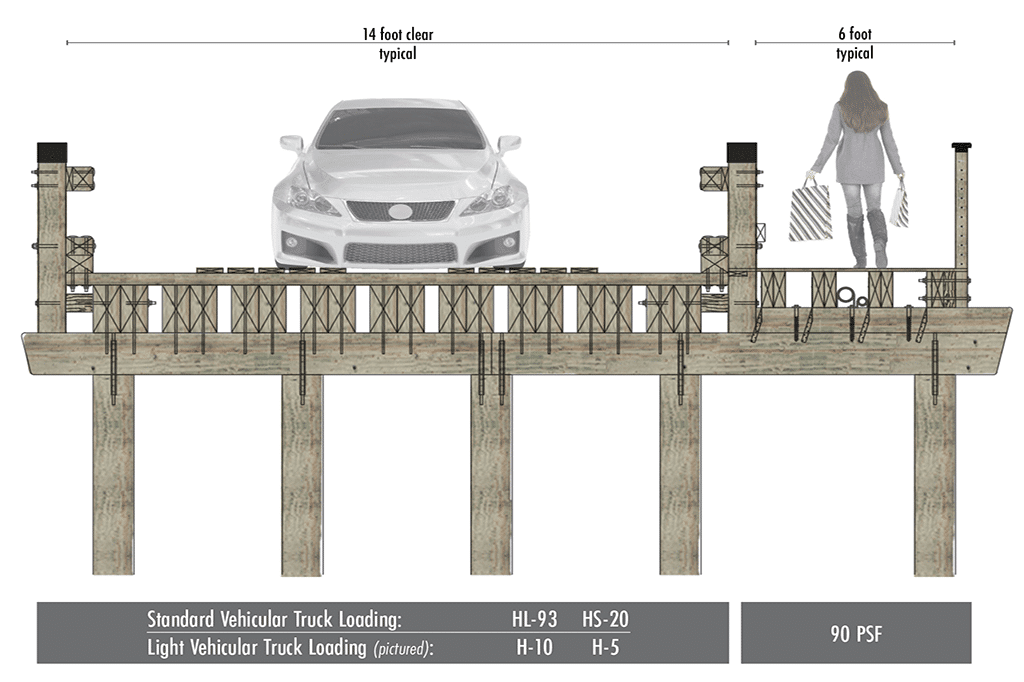
Single Lane + attached pedestrian
Visual loading diagram for a Double Lane Vehicular with two attached pedestrian sections
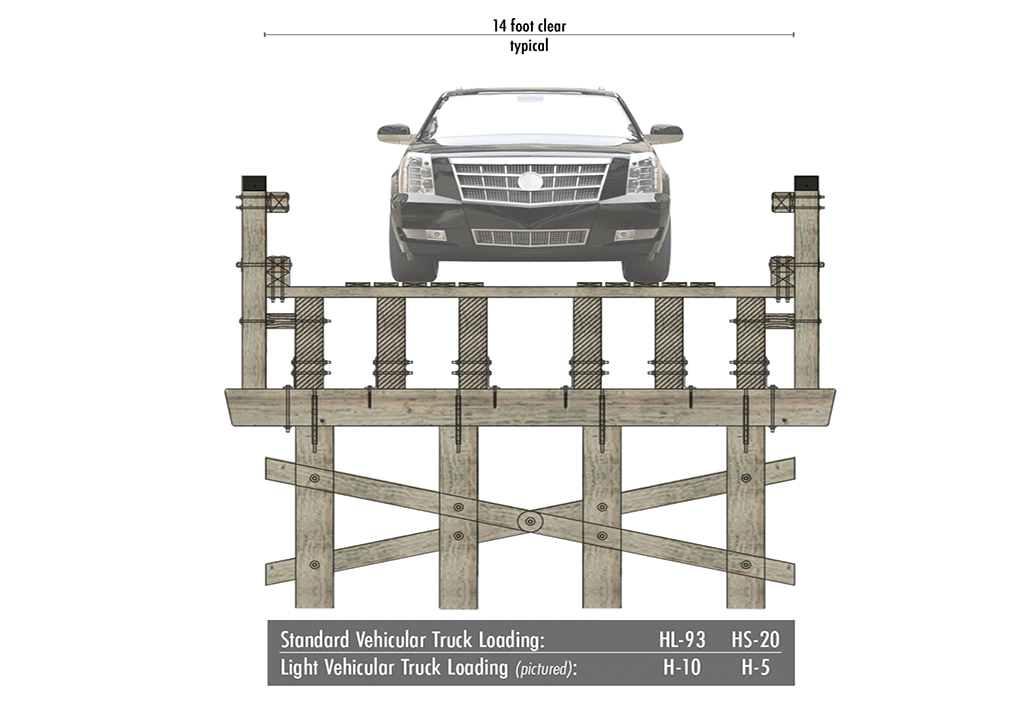
Single Lane Vehicular Bridge
Visual loading diagram for a Double Lane Vehicular with a single attached pedestrian section
Looking for a custom solution specific to Your Project needs?
As a Timber Bridge Builder with 40 years of experience, York Bridge Concepts has extensive knowledge of how to design and construct timber bridges with optimal load capacities, taking into account the specific requirements of each project.
Create Your Legacy Today
Discover the intersection of strength, durability, and environmental responsibility with York Bridge Concepts. Let's build a bridge to the future together.
